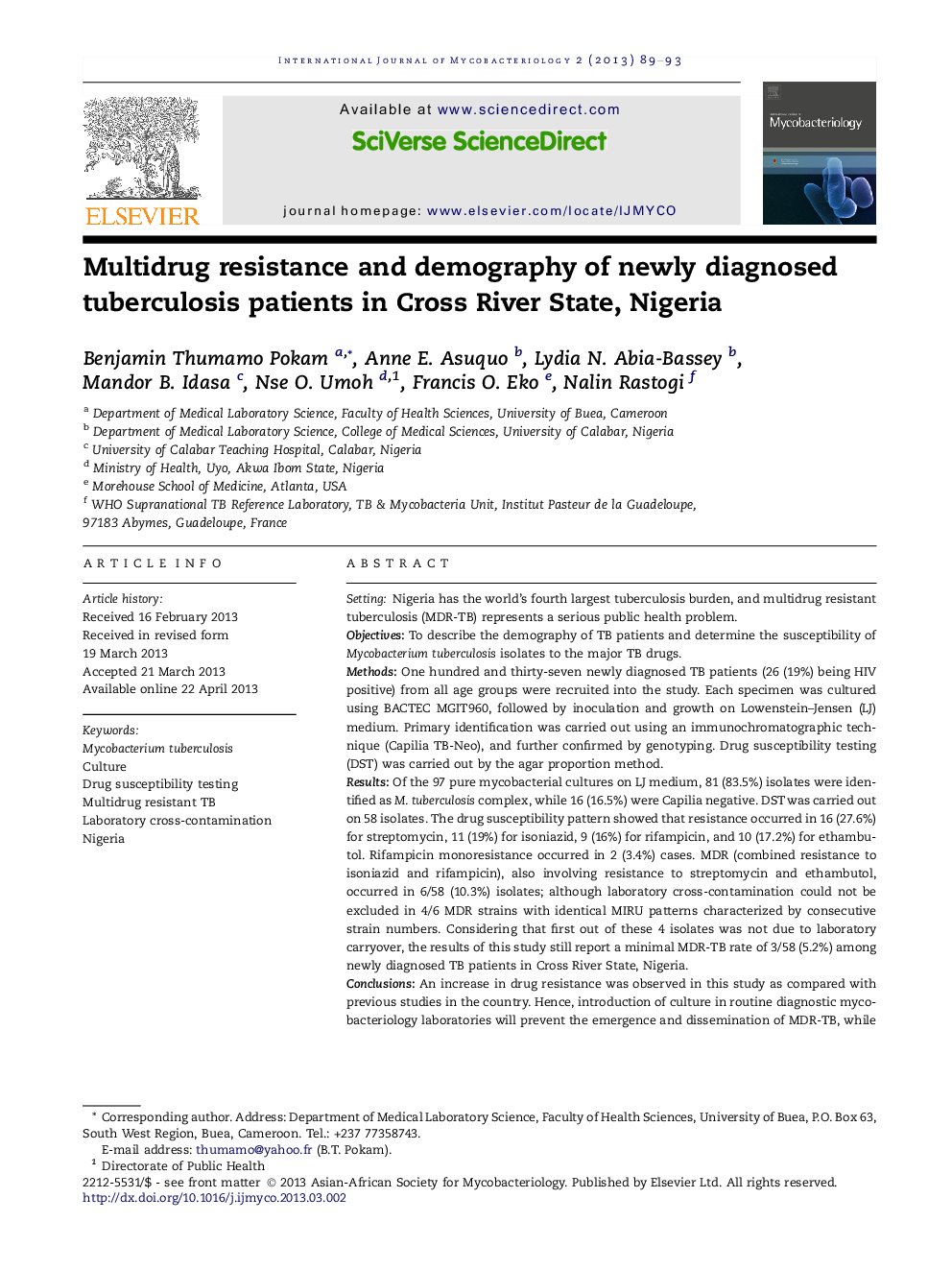| Article ID | Journal | Published Year | Pages | File Type |
|---|---|---|---|---|
| 3405008 | International Journal of Mycobacteriology | 2013 | 5 Pages |
SettingNigeria has the world’s fourth largest tuberculosis burden, and multidrug resistant tuberculosis (MDR-TB) represents a serious public health problem.ObjectivesTo describe the demography of TB patients and determine the susceptibility of Mycobacterium tuberculosis isolates to the major TB drugs.MethodsOne hundred and thirty-seven newly diagnosed TB patients (26 (19%) being HIV positive) from all age groups were recruited into the study. Each specimen was cultured using BACTEC MGIT960, followed by inoculation and growth on Lowenstein–Jensen (LJ) medium. Primary identification was carried out using an immunochromatographic technique (Capilia TB-Neo), and further confirmed by genotyping. Drug susceptibility testing (DST) was carried out by the agar proportion method.ResultsOf the 97 pure mycobacterial cultures on LJ medium, 81 (83.5%) isolates were identified as M. tuberculosis complex, while 16 (16.5%) were Capilia negative. DST was carried out on 58 isolates. The drug susceptibility pattern showed that resistance occurred in 16 (27.6%) for streptomycin, 11 (19%) for isoniazid, 9 (16%) for rifampicin, and 10 (17.2%) for ethambutol. Rifampicin monoresistance occurred in 2 (3.4%) cases. MDR (combined resistance to isoniazid and rifampicin), also involving resistance to streptomycin and ethambutol, occurred in 6/58 (10.3%) isolates; although laboratory cross-contamination could not be excluded in 4/6 MDR strains with identical MIRU patterns characterized by consecutive strain numbers. Considering that first out of these 4 isolates was not due to laboratory carryover, the results of this study still report a minimal MDR-TB rate of 3/58 (5.2%) among newly diagnosed TB patients in Cross River State, Nigeria.ConclusionsAn increase in drug resistance was observed in this study as compared with previous studies in the country. Hence, introduction of culture in routine diagnostic mycobacteriology laboratories will prevent the emergence and dissemination of MDR-TB, while improved quality control strategies would in parallel prevent laboratory cross-contamination, thereby reducing mislabeling, unnecessary treatment, and drug toxicity for patients.
